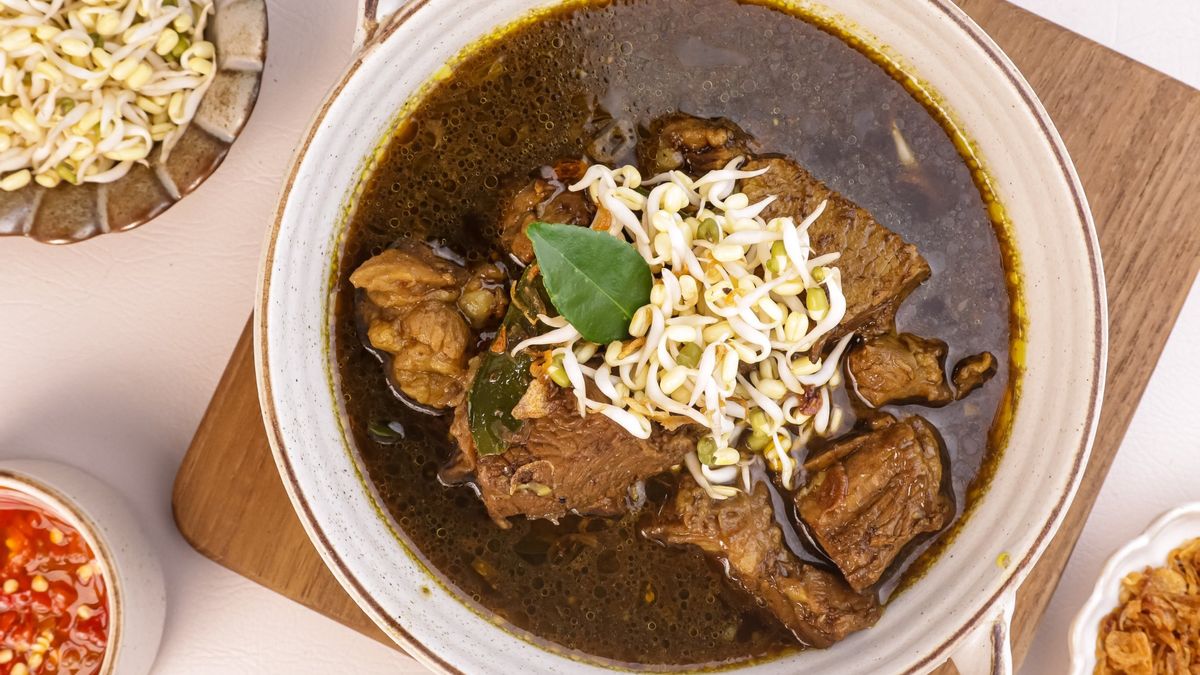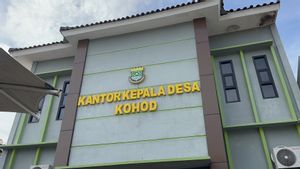YOGYAKARTA - Rawon and brongkos, two typical Indonesian dishes that have a similar appearance, often confuse culinary connoisseurs. So what's the difference between rawon and brongkos?
Both are rich in spices, especially cluwak spices which give their soup a distinctive black color, these two foods do have many similarities.
However, if examined more deeply, there are several fundamental differences that distinguish between Rawon and Brongkos.
Reporting from the Wikipedia page, Brongkos is a spicy meat and nuts dish typical of Java, especially from Yogyakarta and other cities in Central Java, Indonesia.
Meanwhile, it is said that rawon has existed since the time of the Majapahit Kingdom. This is evidenced by a manuscript that mentions this food in the Taji Inscription (901 M) in Ponorogo, East Java.
In the inscription, Rawon is written under the name "rarawwan". This inscription makes many people believe that Rawon came from Ponorogo before it finally spread throughout East Java.
One of the keys to the uniqueness and uniqueness of the rawon is the use of a "luAKE" or kluwek which provides a dark black color typical of the rawon.
If you don't use "luAKE", you could say rawon is just an ordinary soup. Because of its dark black color, many foreign tourists refer to Rawon as a black soup.
Before continuing, also read the article that discussed: Kluwek, the Black Bumbu Rawon and the Antimicrobial Sup Conro
Meanwhile, brongkos are boiled made from coconut coconut milk using a mix of rich spices, including black kluwek. The only difference is that there is whole cayenne pepper which gives a surprising spicy sensation when bitten.
But please note,luak is a poisonous spice if it is not processed properly. So, you shouldn't eat it raw.
One portion of rawon consists of beef, sprouts, sprinkles of fried onions, shrimp crackers, salted eggs, and thick black sauce. Rawon sauce itself is rich in spices and soft meat, coupled with salted eggs and the freshness of accretion, making a delicious combination in one bribe of Javanese-style rawon.
Meanwhile, brongkos consists of beef, such as beef, goat, or sheep, boiled eggs and tofu. Beans in brongkos are usually black beans or red beans. All of them are combined with chicken siam labus, and sometimes carrots.
Brongkos, along with gudeg, sayur lodeh, and rawon, is considered a classic Javanese dish. This dish is known as one of the dishes of the kingdom of Kraton Yogyakarta, because it is believed to be Sultan Hamengkubuwono IX's favorite dish.
Although brongkos is often associated with the city of Yogyakarta, these spicy meat and nuts are quite widespread in Javanese traditions, especially in Central Java, because several other cities such as Demak, Solo, Magelang, and Temanggung.
Meanwhile, rawon has been known since ancient Javanese time. Although popular writing states that Rawon is recorded in the Taji inscription from 901 AD, the term Rawon is not found anywhere in the Taji manuscript which is stored in the National Museum of Indonesia.
Taji only noted information about foods consumed by ancient Javanese, such as rice, buffalo, chicken, salted foods,ferodics, fish, and eggs.
According to Prof. Timbul Haryono, an archaeological expert from Gadjah Mada University (UGM), Rawon has existed since the ancient Javanese era. Keluak, the main ingredient of Rawon that creates its black color, is mentioned in the Centhini Serat.
Apart from the different rawon and brongkos, follow other interesting articles too. Want to know other interesting information? Don't miss it, keep an eye on the updated news from VOI and follow all the social media accounts!
The English, Chinese, Japanese, Arabic, and French versions are automatically generated by the AI. So there may still be inaccuracies in translating, please always see Indonesian as our main language. (system supported by DigitalSiber.id)













